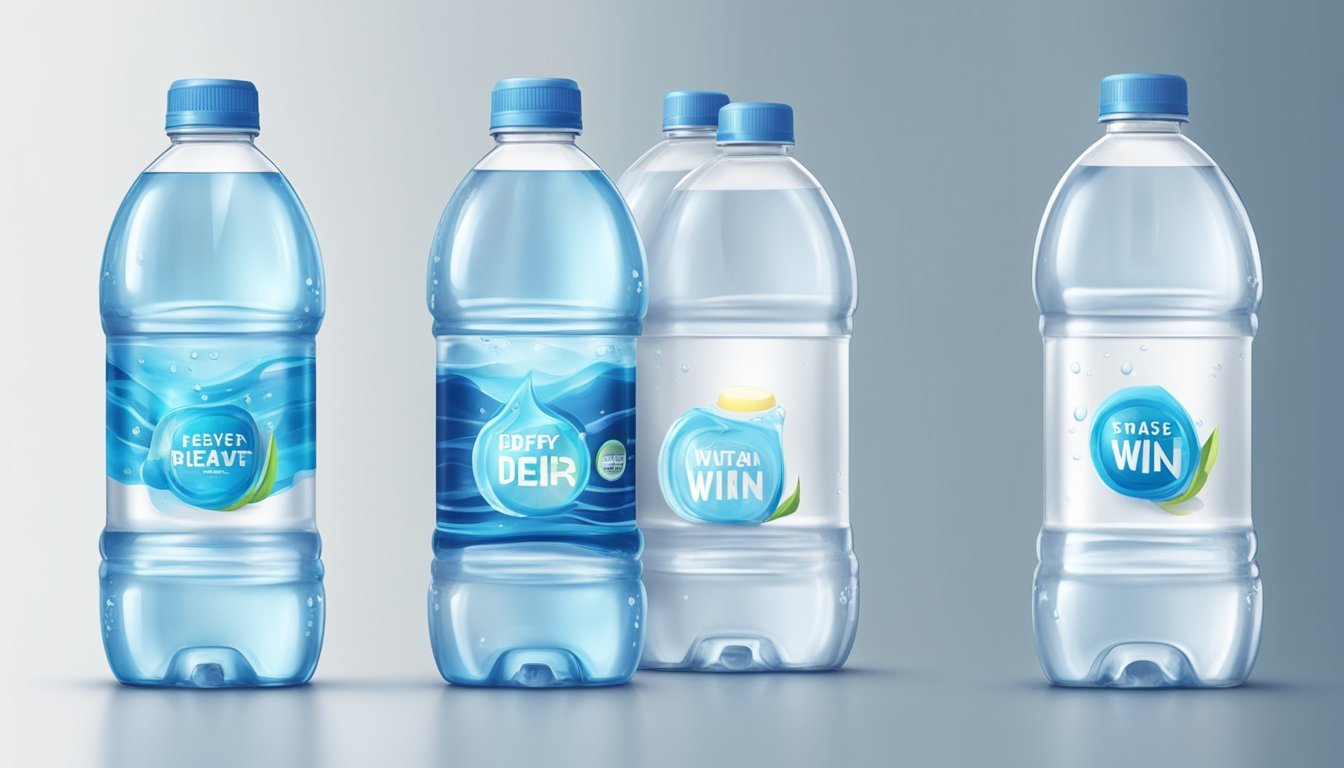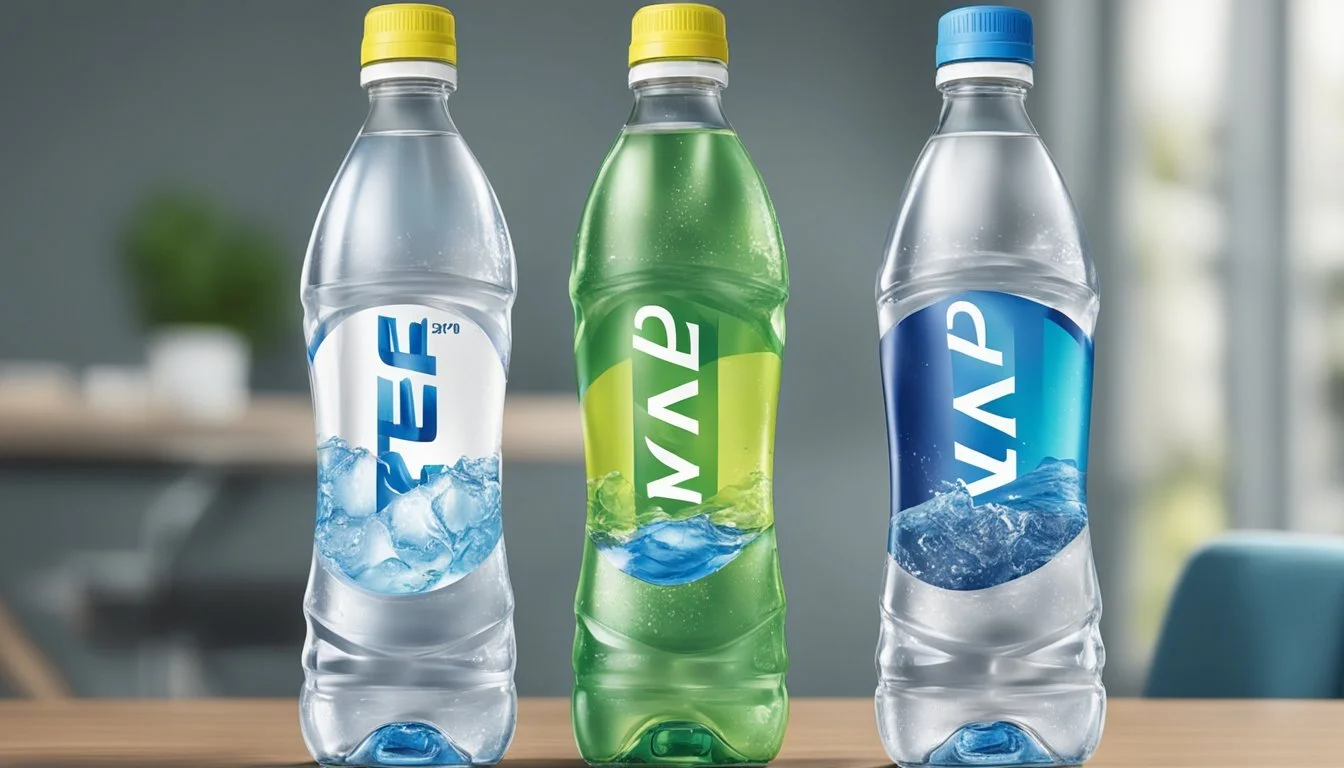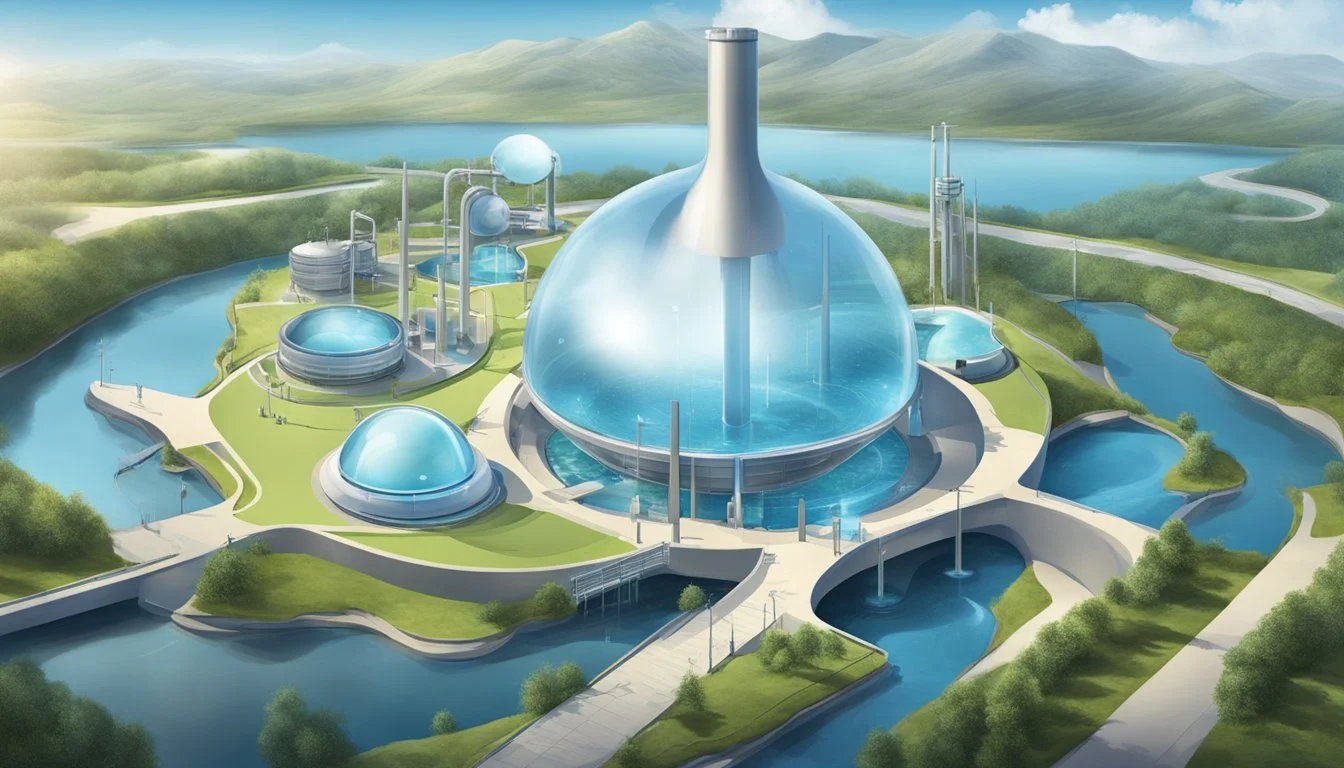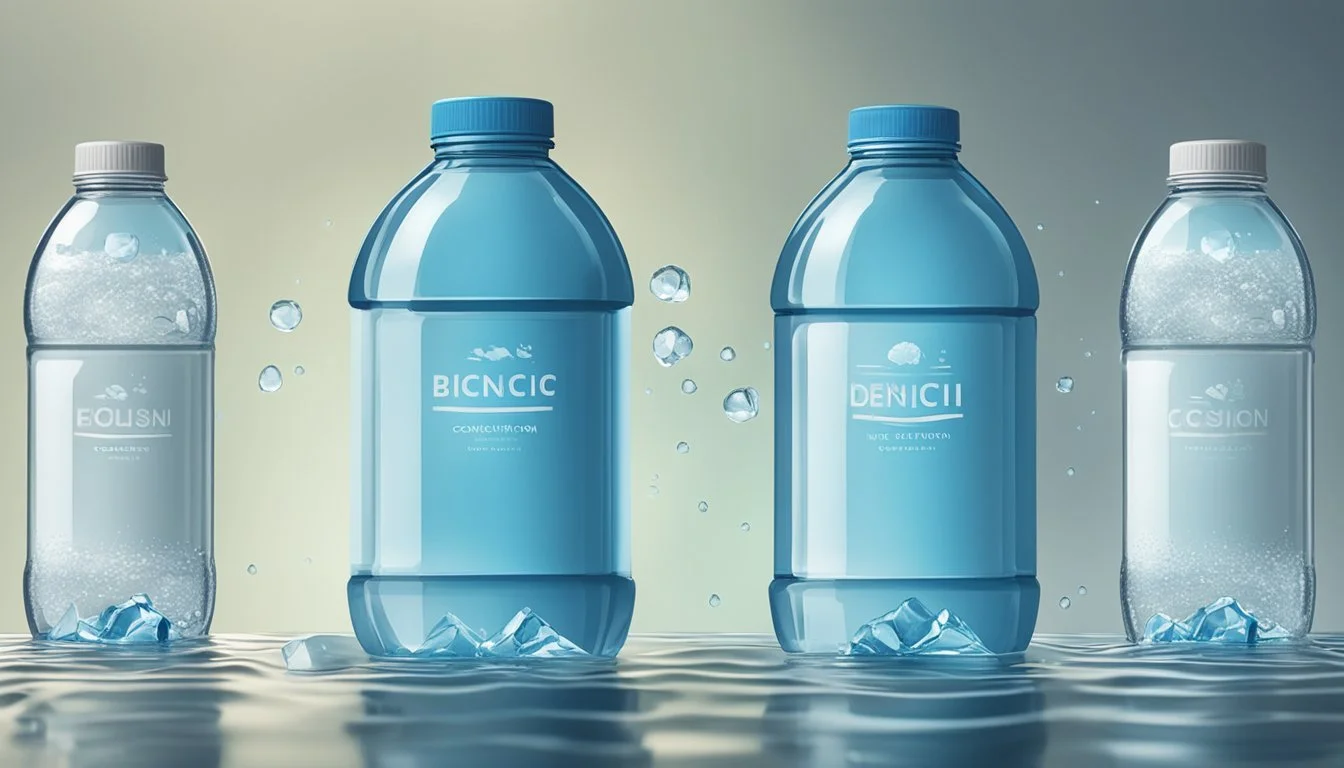Defy vs. Big Win
An Expert Comparison of Bottled Water Quality
When it comes to bottled water, consumers often seek clarity on which brand stands out, especially in terms of taste, reliability, and health benefits. In the battle between Defy and Big Win, it’s essential to weigh the merits of each to determine the superior option. While both brands claim purity and superior hydration, Defy edges out Big Win with its consistently crisp taste and higher mineral content.
Defy, known for its premium quality and refreshing taste, sources its water from natural springs, ensuring a clean and invigorating experience with every sip. Consumers often praise its smooth finish and the absence of any aftertaste, making it a preferred choice among water enthusiasts.
Big Win offers a practical and budget-friendly alternative, providing dependable hydration for everyday use. Despite its affordability, some users note a faint plastic-like taste which might detract from its appeal. For those prioritizing taste and quality, Defy remains the better choice.
The Basics of Bottled Water
Bottled water is a highly scrutinized product, comparing factors such as source, cost, and environmental impact. Understanding the differences between bottled water and tap water helps consumers make informed decisions.
Defining Bottled Water
Bottled water is commercially packaged in plastic or glass bottles for retail and consumption. It can originate from various sources, including springs, wells, or municipal supplies. Labels often specify the origin and purification process, with terms like "spring water," "mineral water," and "purified water."
The industry emphasizes convenience and perceived quality. Some brands add minerals for taste, while others undergo extensive filtration. Standards set by entities like the FDA ensure bottled water in the United States meets safety criteria, though these standards may vary globally.
Comparing Bottled Water to Tap Water
Tap water is sourced from local municipalities and is subject to EPA regulations. It typically undergoes treatment processes, including filtration and disinfection, to remove contaminants. The cost of tap water is significantly lower than bottled water, often being just cents per gallon.
Environmental impact is a key factor; tap water generates less waste compared to bottled water, which involves plastic production and disposal. Bottled water is convenient and portable, but tap water remains an economical and environmentally friendly option.
Comparative studies show that both types meet safety standards, but preferences may vary based on taste, convenience, and environmental considerations. Both former sections illustrate these important dimensions to help guide consumer choices.
Health and Safety Standards
When evaluating bottled water, it's crucial to consider regulations, pH levels, and potential contaminants that impact health and safety. This ensures consumers make an informed choice between Defy and Big Win.
EPA and FDA Regulations
The FDA (Food and Drug Administration) regulates bottled water to ensure it meets quality and safety standards. Federal standards for bottled water were first implemented in 1973, based on the U.S. Public Health Service standards from 1962.
Alternatively, the EPA (Environmental Protection Agency) oversees tap water standards, requiring testing for about 90 different contaminants. This includes everything from lead to harmful chemicals. While the FDA has stringent rules for bottled water, the level of scrutiny and testing might differ from those imposed by the EPA for tap water.
Understanding pH Levels in Water
The pH level of water measures its acidity or alkalinity, with a neutral pH being 7. Water can be acidic (below 7) or alkaline (above 7).
Defy and Big Win both offer options with varied pH levels. It's important to choose a pH that aligns with personal health needs. Some bottled waters are adjusted to be more alkaline by adding minerals. The preference for neutral or slightly alkaline water often depends on individual considerations, such as stomach sensitivity or specific health conditions.
Contaminants and Chemical Composition
Both Defy and Big Win focus on ensuring their bottled water is free from harmful contaminants. Bottled water may still contain trace amounts of impurities, including bacteria and chemicals, which are monitored closely to fall within safe limits.
Sterilization methods, such as ozonation or UV light, help eliminate potential pathogens. The Environmental Working Group has highlighted concerns about the presence of contaminants that could pose long-term health risks, such as cancerous compounds. Consumers should check for transparency regarding chemical composition and sterilization methods used by each brand to assure safe drinking water.
By understanding these health and safety standards, individuals can make a more informed decision when choosing between Defy and Big Win bottled water.
Comparative Analysis of Popular Bottled Waters
Analyzing popular bottled waters involves examining their taste profiles, mineral content, and how brands like Defy and Big Win compare. This section provides insights into the nuances of various bottled water options.
Taste Profiling and Water Sommelier Insights
Taste profiling reveals subtle differences in bottled waters. For instance, Mountain Valley from Arkansas has a light, clean taste with a velvety texture. Dasani and Aquafina, both purified waters, often have a neutral taste, though some find them slightly metallic.
Evian is known for its smooth and slightly alkaline profile, providing a refreshing feeling. Fiji, with its unique silica content, offers a soft mouthfeel. Distinctions in mineral content and processing methods significantly influence these taste experiences.
Mineral Content and Health Benefits
Mineral content plays a crucial role in bottled water quality. Evian contains minerals like calcium and magnesium, known to aid in bone health. Fiji's high silica levels contribute to skin health.
Smartwater, vapor-distilled and fortified with electrolytes, is marketed for rehydration. Essentia boasts a high pH level, suggesting alkalinity benefits. Understanding these minerals helps consumers make informed choices based on their health needs.
Brand Comparison: Defy vs. Big Win
Defy positions itself as a premium brand with enhanced electrolytes for performance. Its taste is often described as crisp and clean. Comparatively, Big Win provides an affordable option with a neutral taste, catering to everyday hydration needs.
Defy targets health-conscious individuals seeking added benefits, while Big Win appeals to budget-conscious consumers. Both brands fulfill different market segments, making the choice dependent on individual preferences and priorities.
Environmental Impact and Sustainability
Both Defy and Big Win bottled water brands have to consider various environmental factors. This section explores the different aspects of their production and packaging that affect the environment, including the use of plastics, advancements in eco-friendly packaging, and the conservation of water sources.
Bottled Water and Plastics: Environmental Considerations
Plastic bottles significantly impact the environment due to their production and disposal processes. Manufacturing plastic bottles requires three times as much water as they can hold, leading to excessive water usage.
Moreover, plastic bottles contribute to pollution since many end up in landfills or oceans. The environmental cost is vast, which includes habitat destruction and harm to marine life. Therefore, it is crucial to consider how brands like Defy and Big Win manage their use of plastics.
Advancements in Eco-Friendly Packaging
In response to environmental concerns, some brands are shifting towards more sustainable packaging solutions. Boxed water and glass bottles present alternatives that reduce reliance on plastic.
Defy may invest in eco-friendly packaging by increasing its use of recycled materials in its products. On the other hand, Big Win might prioritize developing biodegradable or compostable bottle options. These efforts contribute to reducing the carbon footprint associated with bottled water production.
Water Source Conservation: Spring vs. Groundwater
The source of water—whether spring water or groundwater—plays a significant role in sustainability. Natural spring water often involves less processing but can disrupt local ecosystems if not managed correctly.
Groundwater extraction must be carefully controlled to prevent depletion and negatively affecting local water supplies. Brands like Defy and Big Win must adopt responsible sourcing practices that align with guidelines from environmental protection agencies to ensure long-term sustainability and minimal ecological impact.
Practical Aspects of Bottled Water Consumption
Examining the practical elements of bottled water use reveals key insights into convenience and lifestyle factors as well as the financial impact on consumers.
Convenience and Lifestyle Considerations
Bottled water offers unparalleled convenience for many consumers. Single-serve PET plastic bottles, typically 16.9 ounces, are portable and fit easily into daily routines, from gym sessions to office meetings. This ease of transport makes it a popular choice among busy individuals.
Hydration is another critical factor. Bottled water ensures that individuals have access to clean, safe drinking water whenever needed, supporting consistent water intake throughout the day. This is especially useful in areas where tap water may not be readily accessible or of questionable quality.
Moreover, bottled water often comes in a variety of options, including still, sparkling, and flavored, catering to different tastes and preferences. This variety enhances consumer appeal and encourages regular hydration.
Cost Implications for Consumers
The financial aspect is significant. While bottled water's retail dollar sales grew 6.5% in 2023, reaching $48 billion, the cost to individual consumers adds up. On average, purchasing bottled water regularly can be substantially more expensive than using a reusable bottle and filling it with tap water.
However, the quality of bottled water, perceived or actual, can justify the higher cost for some users. Many consumers believe bottled water to be purer or safer compared to tap water, which may influence their willingness to spend more for what they assume is a better product.
It's also important to consider the environmental cost. Bottled water containers, even though they use less PET plastic compared to soft drink containers, still contribute to environmental waste. Consumers are increasingly aware of these implications and may factor them into their purchasing decisions.
Advanced Water Technologies and Innovations
The bottled water industry is evolving with advanced technologies and creative innovations, driving the market forward. Two significant areas of development are the customization of water's pH level and the introduction of functionality-enhancing additives.
Alkaline Water and Its Variants
Alkaline water is produced by increasing the water's pH level, aiming for a balance of 8 or 9. This trend focuses on potential health benefits, such as improved hydration and neutralizing acidity in the body. Companies like Mitte are leading the charge with high-tech water filters that can adjust pH levels and add beneficial minerals.
Advanced sterilization techniques ensure the water's purity, removing contaminants effectively. Alkaline water options have expanded, including natural spring sources or ionized water enhanced through electrolysis. These variants cater to a health-conscious market, emphasizing the alleged benefits of maintaining a balanced pH in daily consumption.
The Emergence of CBD-Infused and Functional Waters
CBD-infused water is a newer innovation, aiming to combine the benefits of hydration with those of cannabidiol. These products appeal to consumers looking for convenience and wellness enhancement without THC's psychoactive effects. Brands offer various formulations, ensuring users receive consistent CBD dosages.
Functional waters also introduce health-boosting elements, such as vitamins, minerals, and electrolytes. Companies utilize advanced water treatment processes to infuse ingredients while maintaining clarity and taste. This segment includes energy-boosting drinks, immunity-support waters, and even relaxation-promoting beverages.
The emerging market for functional waters showcases the blend of hydration and health, driven by technological advancements in water treatment and ingredient stabilization.
Conclusion
After evaluating both Defy and Big Win, it is evident that each brand has distinct attributes that cater to different preferences.
Defy is known for its crisp and refreshing taste, making it a favorite among those who prioritize flavor. Its sleek packaging also adds to its appeal.
Big Win, on the other hand, offers the advantage of affordability without compromising on hydration quality. It might not have the same flavor profile as Defy but serves as a reliable option for everyday consumption.
When considering environmental impact, both brands could improve. Defy and Big Win should focus on sustainable practices to reduce their carbon footprint.
In terms of availability, Big Win is more accessible due to its wider distribution network.
Price-wise, Big Win stands out for being budget-friendly, making it an ideal choice for cost-conscious consumers.
Taste Preference:
Feature Defy Big Win Taste Refreshing Neutral Packaging Sleek Standard
Practicality:
Defy: Best for those seeking a flavorful experience.
Big Win: Suitable for regular, cost-effective hydration.
Choosing between the two boils down to individual needs and priorities. Whether it’s taste or cost that matters most, both Defy and Big Win offer viable options for different situations.
More About Defy
Mountain Valley Spring Water vs Defy: Which Bottled Water is Better?
Whole Foods Italian Still Mineral water vs Defy: Which Bottled Water is Better?
More About Big Win
Big Win vs Kirkland Signature: Which Bottled Water is Better?
Icelandic Glacial vs Big Win: Which Bottled Water is Better?
Mountain Valley Spring Water vs Big Win: Which Bottled Water is Better?
Richard's Rainwater vs Big Win: Which Bottled Water is Better?
Whole Foods Italian Still Mineral water vs Big Win: Which Bottled Water is Better?






